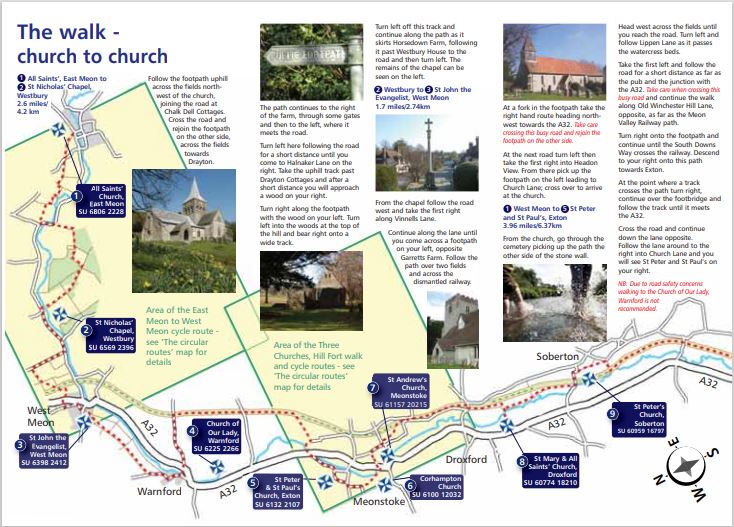St Wilfrid
Dating from the 7th Century, St Wilfrid was one of the greatest English saints. A monk and bishop who was outstanding in bringing about close relations between the Anglo-Saxon Church and the papacy. He was also famous for converting that last holdout of paganism in England, the residents of the Meon Valley!
He was educated in Lindisfarne and even, a great wonder for the age, in Rome and was, for a time, Bishop of York. Exiled from there, he was offered protection by King Aethelwealh and Queen Eaba of the South Saxons, and headed for the area now known as Sussex. Aethelwealh and Eaba were both christians, but the rest of the people were pagans!
Aethelwealh granted Wilfrid an estate at Selsey, near the south coast, where he lived for the next 5 years. The 16th century mural below, now in Chichester cathedral, shows this happening. From here, he went out to convert the South Saxons and the Meonwara to christianity.

Strong local tradition dates Wilfrid arriving in Warnford in 682 where he set up a church and established his headquarters while converting the Meon Valley pagans. This was likely either wooden or wattle and daub, and was replaced in the 10th / early 11th C by a single celled stone church. Its location was, of course, directly under the present church. To those with eyes (and do go look!), there are two physical remains of the stone Saxon church in our present wonderful establishment.
From here he set about converting those in the Meon Valley, establishing churches from Titchfield to East Meon. He would have been greatly helped by the river itself as the Meon River was more substantial in the prehistory to the late medieval periods and was navigable by shallow draft boats to beyond Droxford.
Wilfred was aided by God in his mission with miracles, of course - at least according to his hagiography! This area was suffering greatly from famine when he arrived – there being a drought for 3 years. When he arrived, there fell a soft but plentiful rain; the earth revived, the fields grew green again, and the season was pleasant and fruitful. Thus the old superstition was cast away, and idolatry renounced! He also educated the poor backward people of the Meon, teaching them to fish in the rivers and sea – a skill unknown to them apart from catching eels. And so, Wilfrid followed the teaching of Christ, himself, as he first fed the people of the Meon Valley and then went on to tell them all about God’s love and grace.
You too can walk in his footsteps on the Meon Valley Pilgrimage Trail, walking along the Meon Valley discovering the churches founded in the 7th century by Saint Wilfrid.
For further information on this walk download and print the following link
For further information about St Wilfrid and the trail can be found here.
